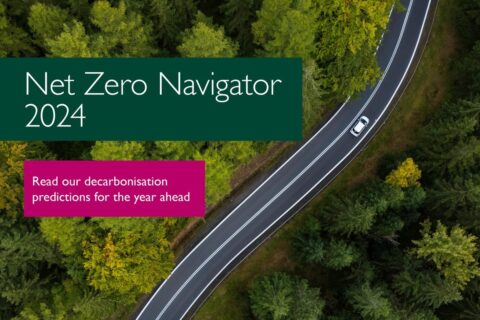
With more than 800sq km of Amazon rainforest being destroyed each month, it is appropriate that the 50th anniversary of Earth Day should see the launch of an innovative project that enlists the support of citizen scientists worldwide to help protect the planet. This interactive approach to image recognition harnesses both the capabilities of human analysis and the power of AI to transform crowdsourced knowledge into actionable intelligence that can be used to fight deforestation.
In a joint initiative, SAS and the International Institute for Applied Systems Analysis (IIASA) are implementing the next generation of crowd-driven artificial intelligence (AI) to power algorithms designed to help us better understand our planet.
SAS is committed to building a global community of innovators that use technology to ignite positive change.
IIASA is an independent, international research institute that is known for its expertise in systems analysis and providing policy solutions and baseline information on pressing concerns for humanity.
IIASA is placing a spotlight on the issue of deforestation to learn about the application of AI to elucidate the interconnectivity of Earth’s ecosystems. Today, our systems are changing rapidly, approaching levels that exceed existing human experiences, scientific understanding and traditional modeling capabilities, making it increasingly difficult for humans to intervene efficiently, effectively and timeously.
The urgency required to address these transformations calls for the application of best of breed technology solution, explains Albert van Jaarsveld, CEO at IIASA:
“By combining the power of our environmental science research platforms, SAS’ AI and computer vision technologies, and the sheer intellectual power of concerned citizens, we will develop AI models that will exponentially increase the value of human insights and strive to deliver near real-time assessment of global environmental change.”
Powerful, accurate, useful AI models do not happen by magic. The development of an AI model starts with human intelligence. For this project, SAS and IIASA are jointly launching an online crowdsource-driven app to gather the collective intelligence of the crowd. They are asking volunteers — an army of citizen scientists from middle school students in today’s virtual classrooms to artists, engineers and professional data scientists — to kick-start this effort by reviewing and judging images of the rainforest. These images show land untouched and land that may have been affected by human development.
Human input is critical initially to help school the AI in image recognition, adds Mr van Jaarsveld
“Since image analysis is an important first step for the accurate assessment and projection of deforestation, we are asking people to see what technology can’t see, by examining and reporting on images of smaller incremental forestry incursions worldwide. Crowdsourcing helps improve the AI algorithms, expediting what used to take years to analyse, thus helping to drive vital policy responses to protect our forests more quickly.”
When people flag regions that have seen signs of human impact, they help make AI models become smarter. For example, it is easy for a human to distinguish between a road (which signals human impact) and a river (which does not), but an AI model will not know the difference until it obtains sufficient training through learning from human observations.
Additionally, results from the model ensure that the crowdsourcing app focuses the attention of human judges where their expertise is most needed. The model will allow for increased efficiency of a volunteer human force that best makes use of their attention and insights for a broad array of projects aimed at monitoring and measuring important global change matters.
With the power of the crowd and the computer combined, SAS and IIASA will have a robust, extensive platform for empowering citizen scientists to assist in cutting-edge research that helps us all better understand, predict and thrive in the world we share. While the first phase of this partnership focuses on deforestation, there are plans to extend this platform to other environmental concerns where crowdsourcing can help serve the greater good.
As a start, everyone can play a role in making AI smarter and improve its ability to help protect our forests. From students who are currently out of the classroom to AI professionals and everyone in between, this activity allows each of us to make a difference just by looking at a few images.
Anyone interested in contributing to the crowdsourcing can visit the project website here and begin to categorise images that show signs of deforestation to help models learn and improve at each iteration.
This crowdsourcing partnership with IIASA is fueled by SAS’ commitment to both data literacy and the Data for Good movement, which encourages using data in meaningful ways to drive positive global change.
Further Reading:
- Contribute to the crowdsourcing project for citizen science.
- Learn about the Data for Good movement.
- More about IIASA.
- More about SAS.
>>> Do you have sustainability news to broadcast and share? If you would like to see it featured here on SustMeme, please use these Contact details to get in touch and send us your Press Release for editorial consideration. Thanks.







